- Factors Affecting Winter Garlic Planting Dates
- Importance of Planting Dates for Winter Garlic
- Climate and Weather Conditions
- Temperature
- Day Length
- Rainfall and Irrigation
- Soil Type and Texture
- Seasonal Variations
- Soil Preparation for Winter Garlic Planting
- 1. Clear the Area
- 2. Test the Soil
- 3. Amend the Soil
- 4. Check Drainage
- 5. Apply Fertilizer
- 6. Prepare the Planting Beds
- Optimal Planting Dates in Cold Climate Regions
- Optimal Planting Dates in Mild Climate Regions
- Farming Techniques for Winter Garlic Planting
- Variety Selection
- Soil Preparation
- Planting Time
- Planting Depth and Spacing
- Watering and Mulching
- Fertilization
- Pest and Disease Control
- Harvesting
- Considerations for Late Planting
- “Question-Answer”
- What is the ideal planting date for winter garlic?
- Can I plant winter garlic at any time of the year?
- What factors should I consider when choosing the planting date for winter garlic?
- What happens if I plant winter garlic too early?
- Can I plant winter garlic later than the recommended dates?
- Are the optimal planting dates for winter garlic the same in different regions?
- How can I determine the optimal planting dates for winter garlic in my region?
- “Video” Don’t Harvest Garlic Until These 2 Things Happen!
When it comes to planting winter garlic, choosing the right time is crucial for a successful crop. The optimal planting dates vary depending on the region, as climate plays a significant role in the growth and development of garlic plants. In this article, we will discuss region-dependent recommendations for planting winter garlic to help growers achieve the best possible yields.
Garlic is a cool-season crop that requires a period of vernalization, or exposure to cold temperatures, to initiate bulb formation. Planting garlic too early or too late can result in poor bulb development and reduced yields. Therefore, it is essential to determine the appropriate planting dates for each specific region.
In regions with mild winters, such as the Southern United States, the optimal planting dates for winter garlic usually fall around October or November. This allows the garlic cloves to establish roots and develop before the arrival of colder weather. Planting too late in these regions can lead to inadequate bulb formation, while planting too early may result in premature sprouting.
On the other hand, in regions with harsh winters, such as Northern Europe or Canada, the optimal planting dates for winter garlic are typically in late summer or early fall. This allows the garlic to establish strong root systems before the ground freezes, ensuring better survival and growth during the winter months. Planting too early in these regions can expose the young garlic plants to the risk of diseases and pests, while planting too late may not provide sufficient time for root development.
It is worth mentioning that these are general recommendations, and local conditions and microclimates may have a significant impact on the optimal planting dates. Consulting with local gardening experts or agricultural extension offices can provide more specific guidance tailored to your region and its unique climate characteristics.
In conclusion, planting winter garlic at the right time is essential for a successful crop. By following region-dependent recommendations for optimal planting dates, growers can ensure better bulb development, higher yields, and healthier garlic plants. Take into account the specific conditions of your region, and don’t hesitate to seek advice from local experts to maximize your chances of success.
Factors Affecting Winter Garlic Planting Dates
1. Climate Conditions:
The climate conditions of a region play a crucial role in determining the optimal planting dates for winter garlic. Factors such as average temperature, rainfall patterns, and frost occurrences all impact the growth and development of garlic plants. It is important to consider these climate conditions when deciding when to plant winter garlic.
2. Varietal Characteristics:
The characteristics of the garlic varieties being planted can also influence the planting dates. Different varieties have varying requirements for temperature and day length for proper bulb formation. Some varieties may be more suited for early planting, while others may require a later planting date. It is important to choose varieties that are well adapted to the local climate and environmental conditions.
3. Soil Temperature:
The temperature of the soil is another important factor to consider when determining the planting dates for winter garlic. Garlic plants need a cool period to establish roots before winter dormancy. Planting too early when the soil is still warm can result in poor root establishment, while planting too late can result in limited root growth before winter sets in. Monitoring and measuring the soil temperature can help determine the optimal planting dates.
4. Disease and Pest Pressure:
The prevalence of diseases and pests in a region can also affect the timing of winter garlic planting. Certain diseases and pests may be more active during specific times of the year, and planting at the wrong time can increase the risk of damage or infection. It is important to consider the local disease and pest pressures when selecting the planting dates.
5. Harvest Goals:
The desired harvest goals can also influence the planting dates for winter garlic. If an early harvest is desired, planting earlier in the season may be necessary. On the other hand, if a late harvest is preferred, a later planting date may be chosen. Understanding the desired harvest goals and selecting the appropriate planting dates can help achieve the desired outcome.
6. Regional Recommendations:
Lastly, it is important to consult regional recommendations and guidelines for winter garlic planting. Local agricultural extension offices, universities, or experienced growers in the area can provide valuable insights and recommendations based on their knowledge of the specific region. These recommendations take into account the local climate, soil conditions, and other regional factors to provide the most accurate planting dates.
Importance of Planting Dates for Winter Garlic
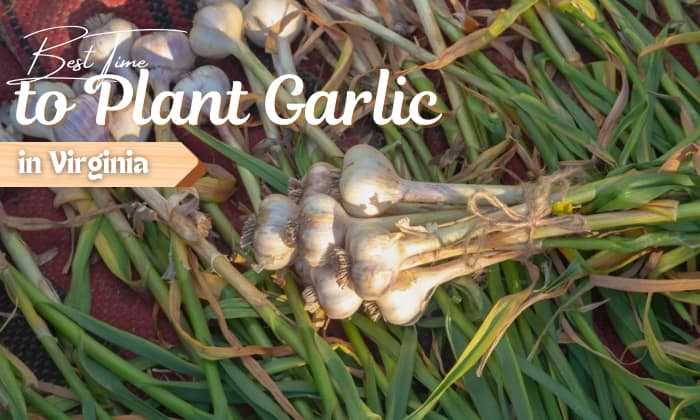
Planting dates are crucial for the successful cultivation of winter garlic. The timing of when you plant your garlic sets the stage for its growth and development throughout the winter season. It is essential to choose the optimal planting dates based on your specific region to ensure the best possible harvest.
There are several reasons why planting dates are important for winter garlic:
- Climate Adaptation: Garlic needs a period of cold exposure, known as vernalization, to produce large bulbs. By planting at the optimal time, you can ensure that your garlic receives the necessary chilling hours to develop properly.
- Pest and Disease Management: Planting garlic at the right time helps minimize the risk of pest and disease infestations. By avoiding excessive humidity or extreme temperature fluctuations, you can reduce the likelihood of garlic-related issues such as rot, mildew, or insect damage.
- Yield and Quality: Proper planting dates can significantly impact the yield and quality of your garlic crop. Planting too early or too late may result in smaller bulbs or reduced flavor. By following region-dependent recommendations, you can optimize your garlic production and achieve the desired taste and size.
- Harvest Time Planning: Planting garlic at the right time allows you to plan for the harvest accordingly. Depending on the variety and growing conditions, garlic typically takes several months to mature. By knowing the optimal planting dates, you can estimate when to expect your harvest and plan your gardening schedule accordingly.
It is important to note that the optimal planting dates for winter garlic can vary depending on your specific region. Factors such as temperature, daylight hours, and frost dates can influence the ideal timing for planting. Consulting a regional planting guide or contacting local experts can provide you with the most accurate recommendations for your area.
| Region | Optimal Planting Dates |
|---|---|
| Northwest | September – October |
| Northeast | October – November |
| Southwest | November – December |
| Southeast | December – January |
By understanding the importance of planting dates for winter garlic and following region-dependent recommendations, you can set your garlic crop up for success.
Climate and Weather Conditions
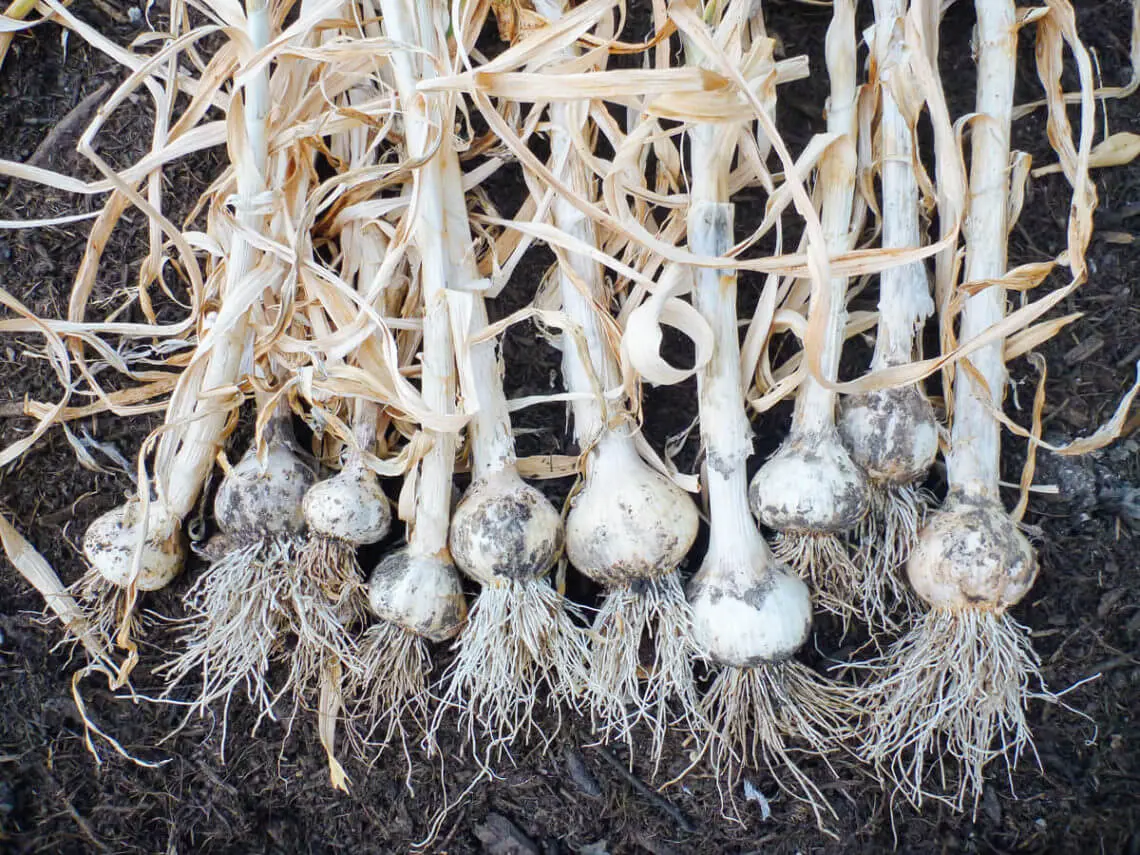
The climate and weather conditions play a crucial role in determining the optimal planting dates for winter garlic. Understanding the specific requirements of garlic in different regions can help ensure successful cultivation and maximize yields.
Temperature
Garlic requires specific temperature conditions for optimal growth. It is a cool-season crop and thrives in temperatures between 50°F (10°C) and 78°F (25°C). However, garlic cloves need exposure to temperatures below 50°F (10°C) for a certain period to develop proper bulb formation. Frost and freezing temperatures may damage garlic plants, so it is essential to consider the local climate and frost-free periods when determining planting dates.
Day Length
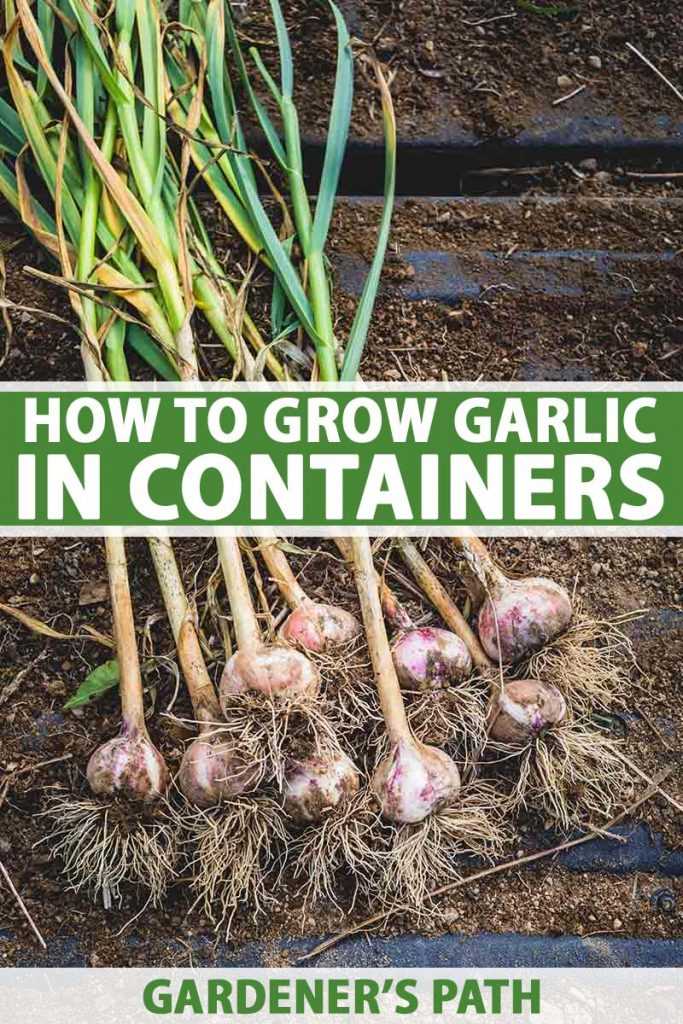
Day length is an important factor in garlic growth and development. Garlic is categorized as a long-day plant, meaning that it requires longer periods of daylight to initiate bulb formation. In regions with shorter daylight hours, adapting planting dates accordingly can help optimize bulb growth.
Rainfall and Irrigation
Garlic prefers well-drained soil and does not tolerate waterlogged conditions. Excessive rainfall or poor drainage can lead to root rot and other fungal diseases. Adequate irrigation is crucial during the planting and early growth stages. It is essential to monitor local rainfall patterns and adjust irrigation practices accordingly to maintain optimal soil moisture levels.
Soil Type and Texture
The soil type and texture can influence the planting dates for winter garlic. Garlic prefers loamy, well-drained soil with a pH level between 6.0 and 7.0. Heavy clay soils can delay early growth and may necessitate later planting dates. Sandy soils, on the other hand, drain faster and may require earlier planting. Conducting a soil test and amending the soil accordingly can help create favorable conditions for garlic cultivation.
Seasonal Variations
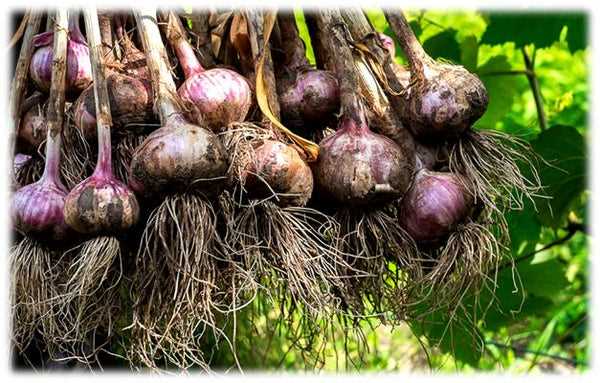
Seasonal variations, such as the onset of fall and winter, can significantly impact the planting dates for garlic. While some regions have distinct seasons, others may experience milder or unpredictable weather patterns. Monitoring local weather forecasts and historical climate data can provide insights into the appropriate timing for planting winter garlic in different regions.
| Factors | Considerations |
|---|---|
| Temperature | 50°F (10°C) to 78°F (25°C) |
| Day Length | Long-day plant |
| Rainfall and Irrigation | Adequate moisture, well-drained soil |
| Soil Type and Texture | Loamy, well-drained soil |
| Seasonal Variations | Fall and winter onset |
Soil Preparation for Winter Garlic Planting
Proper soil preparation is crucial for successful winter garlic planting. By taking the time to prepare your soil correctly, you can create the optimal conditions for garlic growth and ensure a bountiful harvest. Here are some essential steps to follow:
1. Clear the Area
Begin by clearing the area of any debris, weeds, or previous plant residues. This will help create a clean and weed-free space for your garlic to grow.
2. Test the Soil
Before planting, it’s important to test the soil to determine its pH level and nutrient content. Garlic prefers a slightly acidic soil with a pH range of 6.0 to 7.0. If your soil’s pH is too high or too low, you may need to adjust it by adding lime or sulfur accordingly. Additionally, testing the soil will help you identify any nutrient deficiencies that need to be addressed.
3. Amend the Soil
Once you’ve identified any nutrient deficiencies, you can amend the soil by adding organic matter such as compost, well-rotted manure, or aged leaf mold. Organic matter helps improve soil structure, drainage, and fertility, providing a better environment for garlic growth. Work the organic matter into the top few inches of soil using a garden fork or tiller.
4. Check Drainage
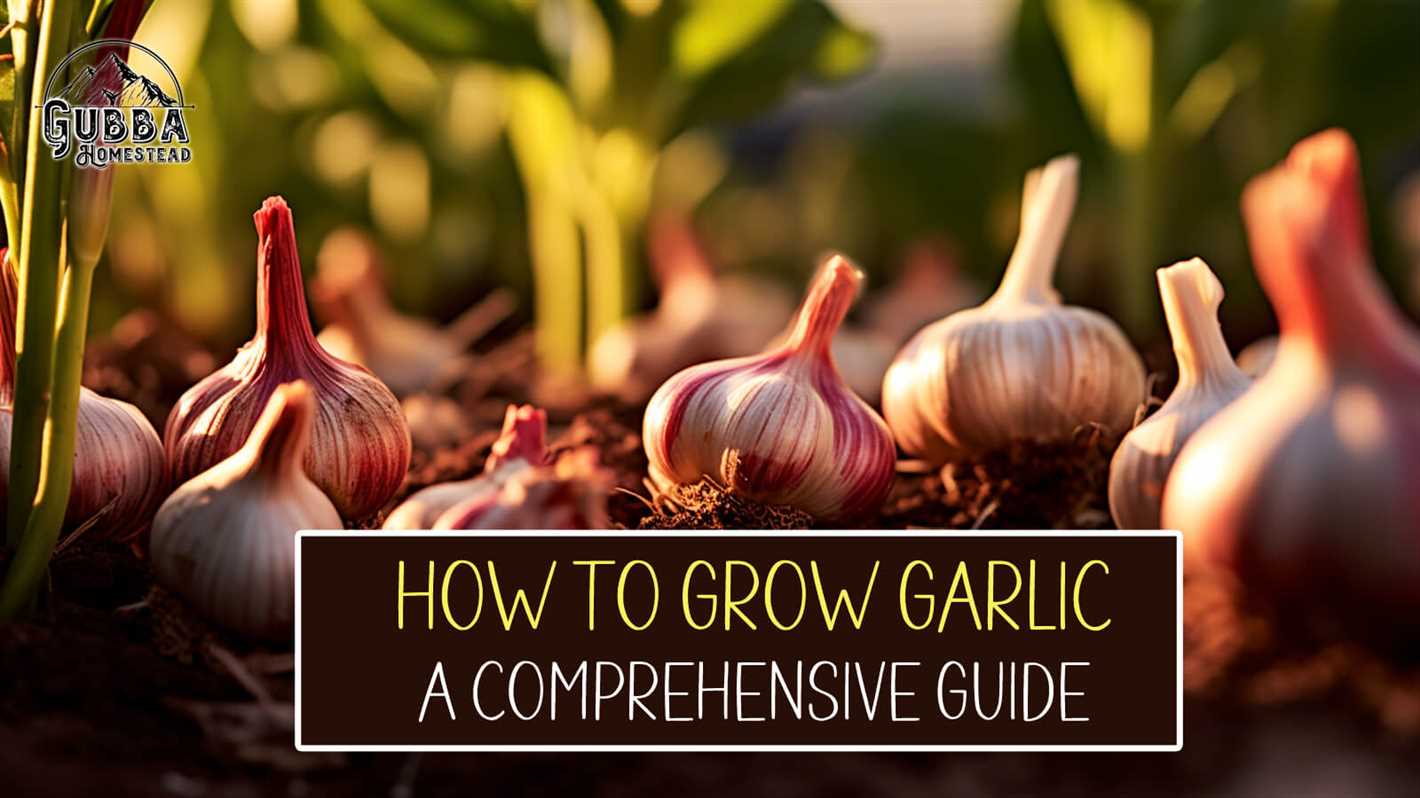
Garlic prefers well-draining soil. To ensure good drainage, check the soil’s current drainage ability. Dig a hole approximately 1 foot deep and fill it with water. If the water drains within a few hours, the drainage is adequate. However, if the water lingers for longer, you may need to improve drainage by incorporating coarse sand or perlite into the soil.
5. Apply Fertilizer
Before planting, it’s advisable to apply a balanced fertilizer to provide the necessary nutrients for garlic growth. Use a fertilizer with a higher phosphorus content, as this promotes root development. Follow the manufacturer’s instructions for application rates and timing.
6. Prepare the Planting Beds
Finally, prepare the planting beds by creating furrows or raised beds. These will help improve drainage and prevent excess water accumulation. Space the furrows or raised beds to allow for proper airflow and ensure adequate access for weeding and harvesting.
By following these soil preparation steps, you can create the optimal conditions for winter garlic planting. Your garlic will have a better chance of thriving and producing a plentiful harvest.
Optimal Planting Dates in Cold Climate Regions
In cold climate regions, such as northern parts of the United States and Canada, it is essential to choose the right planting dates for winter garlic to ensure a successful harvest. The optimal planting dates may vary depending on factors such as the average frost date, temperature, and the specific variety of garlic being planted.
Determining Frost Dates:
- Before choosing planting dates, it is important to determine the average frost date in your specific region. This can usually be found through local agricultural extension services or online resources.
- The planting dates should be set a few weeks before the first expected frost date, allowing the garlic to establish roots before the ground freezes.
Choosing Varieties:
- When planting garlic in cold climates, it is recommended to choose varieties that are suited for cold weather conditions. These varieties are generally known as “hardneck” garlic.
- Hardneck garlic varieties have a better tolerance for cold temperatures and are more likely to successfully overwinter.
Recommended Planting Dates:
| Region | Recommended Planting Dates |
|---|---|
| Northern United States | Late September to early October |
| Canada (Northern regions) | Early to mid-September |
| Other cold climate regions | Between September and early October |
It is important to note that these planting dates serve as general recommendations and may vary depending on the specific conditions and microclimates in your locality. Adjustments can be made based on local weather patterns and other factors.
By following these optimal planting dates, garlic cloves will have enough time to develop roots and establish a strong foundation before winter sets in.
Optimal Planting Dates in Mild Climate Regions
The success of growing winter garlic in mild climate regions depends greatly on choosing the right planting dates. Planting at the optimal time ensures that the garlic has enough time to develop before the onset of warm temperatures.
Factors to Consider:
- Soil temperature: Garlic prefers to be planted in soil with a temperature between 50°F and 70°F (10°C – 21°C).
- Frost dates: Knowing the average frost dates in your region will help determine when to plant. Garlic needs a certain amount of cold weather exposure to ensure proper bulb development.
- Daylight hours: Garlic requires a certain number of daylight hours to properly grow and form bulbs. Longer days are ideal for bulb development.
Recommended Planting Dates:
The following are general recommendations for planting winter garlic in mild climate regions:
| Region | Optimal Planting Dates |
|---|---|
| Coastal Mild Climate | September – October |
| Inland Mild Climate | October – November |
| Mountainous Mild Climate | November – December |
Note: These dates are general guidelines and may vary depending on specific microclimates within each region. It is always best to consult with local gardening experts or agricultural extension services for more accurate recommendations.
Farming Techniques for Winter Garlic Planting
Variety Selection
Choosing the right variety of garlic for winter planting is important as not all varieties are suitable for cold weather conditions. It is recommended to select hardneck garlic varieties as they are more cold-tolerant compared to softneck varieties. Some popular winter garlic varieties include Chesnok Red, German Extra Hardy, and Siberian.
Soil Preparation
Proper soil preparation is crucial for successful winter garlic planting. Begin by removing any weeds or unnecessary vegetation from the planting area. Garlic prefers loose, well-drained soil with a pH level between 6.0 and 7.0. If the soil is heavy clay, consider adding organic matter, such as compost or aged manure, to improve its texture and drainage.
Planting Time
Timing is essential when it comes to winter garlic planting. It is recommended to plant garlic in the late summer or early fall, about 4-6 weeks before the first expected frost. This allows the garlic bulbs to establish their root system before winter sets in.
Planting Depth and Spacing
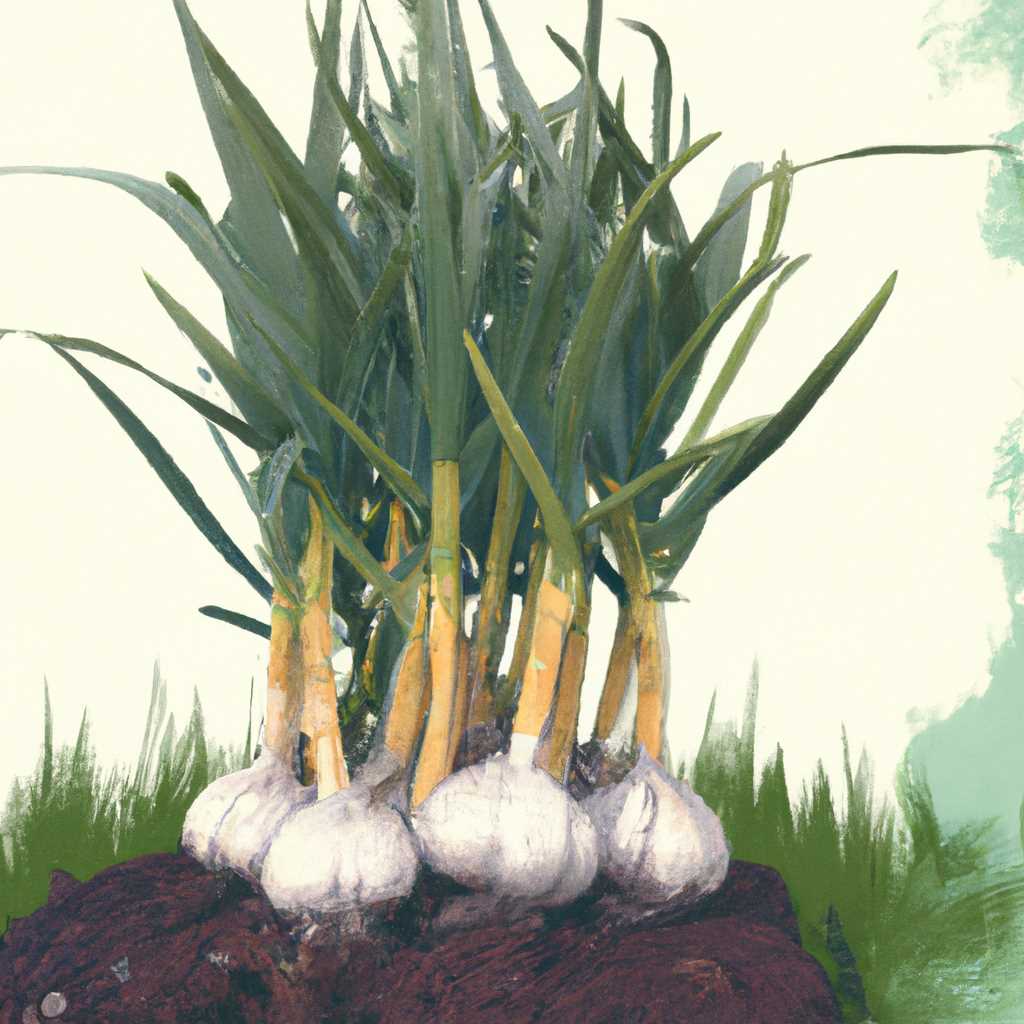
When planting winter garlic, ensure that you plant the individual cloves at a depth of about 2-3 inches. Space the cloves about 4-6 inches apart within rows, and leave about 12-18 inches between rows. This spacing allows enough room for the plants to grow and develop without overcrowding.
Watering and Mulching
Once planted, it is important to provide adequate water to the garlic plants, especially during dry spells. Garlic requires consistent moisture, but avoid overwatering as it can lead to rot. Applying a layer of mulch around the plants helps to retain soil moisture and suppress weed growth. Organic materials like straw or shredded leaves make excellent mulch choices.
Fertilization
Garlic plants benefit from a balanced fertilization schedule. Prior to planting, incorporate a slow-release organic fertilizer into the soil. During the growing season, apply a nitrogen-rich fertilizer periodically to support vigorous growth. Avoid excessive fertilization, as it can negatively impact bulb development.
Pest and Disease Control
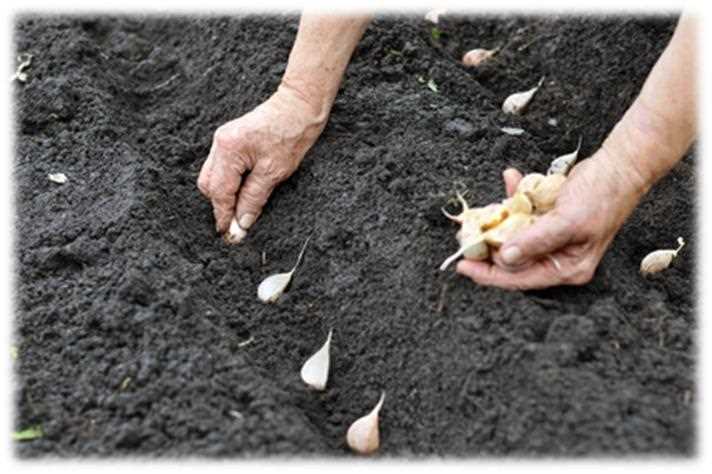
Keep an eye out for common pests and diseases that can affect garlic plants. Regularly inspect plants for signs of aphids, onion maggots, or fungal infections. If necessary, apply organic pest control measures or consult with a local agricultural extension office for specific recommendations for your region.
Harvesting
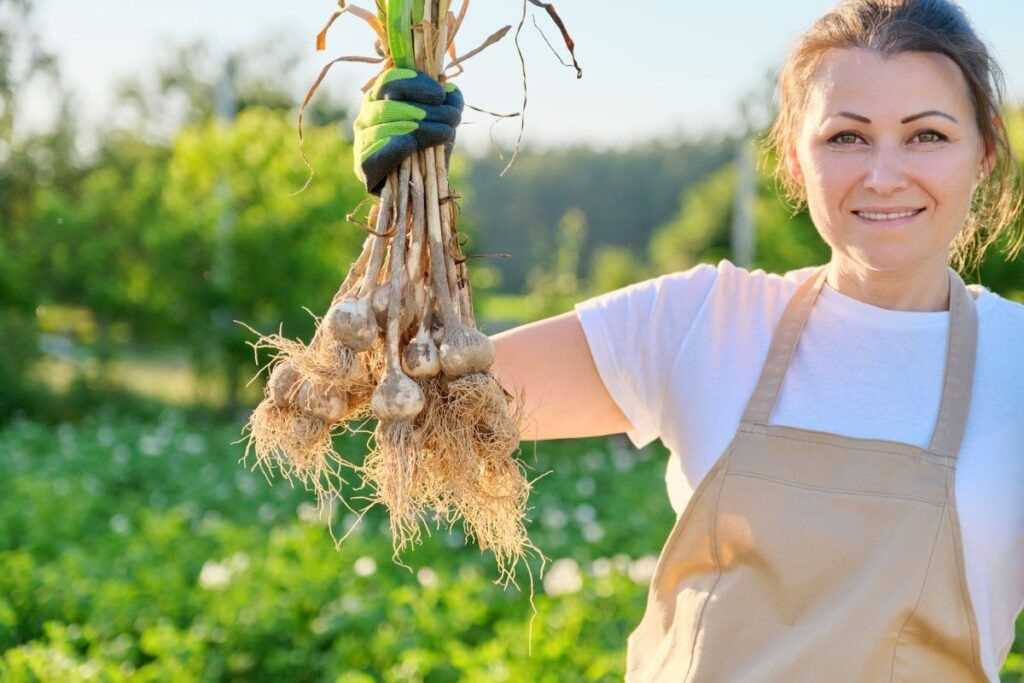
Winter garlic is typically harvested in the following summer when the foliage starts to turn yellow and dry out. Carefully dig up the bulbs, being cautious not to damage them. Allow the garlic bulbs to dry and cure in a well-ventilated area for several weeks before storing them in a cool, dry place.
By following these farming techniques for winter garlic planting, you can ensure a successful harvest of flavorful garlic bulbs that are well-suited for cold weather conditions.
Considerations for Late Planting
When planting garlic late, there are several important considerations to keep in mind. Here are some key points:
- Choose a suitable garlic variety: It’s important to select a garlic variety that is adapted to late planting. Some varieties are more tolerant to cold weather and have a shorter growing season, making them ideal for late planting.
- Consider local climate: The climate in your region will play a significant role in determining the success of late-planted garlic. Take into account the average temperatures and frost dates to gauge the likelihood of the garlic crop surviving and maturing before winter.
- Prepare the planting site: Late-planted garlic needs a well-prepared planting site. Clear the area of weeds, rocks, and debris and ensure that the soil is well-drained and fertile. Adding compost or organic matter can help improve soil quality and nutrient availability.
- Adjust planting depth: When planting garlic late, it’s crucial to adjust the planting depth. Plant the cloves slightly deeper than recommended to provide extra insulation and protection against frost.
- Apply mulch: Mulching can be especially beneficial for late-planted garlic. A layer of mulch helps to insulate the soil, retain moisture, and suppress weed growth. Organic materials like straw or shredded leaves can be used as mulch.
- Provide adequate water: Late-planted garlic requires consistent moisture to establish roots and grow. Water the garlic regularly, especially during dry periods, but be cautious not to overwater and cause waterlogging.
- Fertilize appropriately: Late-planted garlic may benefit from additional fertilization. Conduct a soil test to determine nutrient levels and apply a balanced fertilizer accordingly.
- Protect against freezing temperatures: Late-planted garlic is more susceptible to freezing temperatures. Consider using row covers, cold frames, or other protective measures to safeguard the crop during extreme cold spells.
- Monitor for diseases and pests: Late-planted garlic may be more vulnerable to diseases and pests. Regularly inspect the plants for signs of fungal infections, insect damage, or other issues and take appropriate action if necessary.
By taking these considerations into account, you can increase the chances of success for your late-planted garlic crop. While there may be some added challenges, with proper care and management, you can still achieve a bountiful harvest.
“Question-Answer”
What is the ideal planting date for winter garlic?
The ideal planting date for winter garlic depends on the region. The article provides region-dependent recommendations for optimal planting dates.
Can I plant winter garlic at any time of the year?
No, winter garlic should be planted at specific times depending on the region. The article provides recommendations for optimal planting dates.
What factors should I consider when choosing the planting date for winter garlic?
When choosing the planting date for winter garlic, it is important to consider the average temperature and frost dates of the region, as well as the desired harvest time. The article provides region-dependent recommendations for optimal planting dates.
What happens if I plant winter garlic too early?
If winter garlic is planted too early, it may be more susceptible to diseases and pests, and the bulbs may not develop properly. The article provides region-dependent recommendations to avoid planting too early.
Can I plant winter garlic later than the recommended dates?
Planting winter garlic later than the recommended dates may result in a delayed harvest or smaller bulbs. It is best to follow the region-dependent recommendations provided in the article.
Are the optimal planting dates for winter garlic the same in different regions?
No, the optimal planting dates for winter garlic vary depending on the region. The article provides region-dependent recommendations to ensure the best results.
How can I determine the optimal planting dates for winter garlic in my region?
To determine the optimal planting dates for winter garlic in your region, it is recommended to consult local agricultural extension services or gardening experts. The article provides general region-dependent recommendations, but specific climatic conditions may vary within a region.







